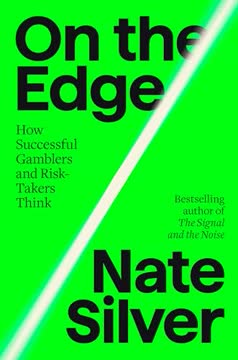つの重要なポイント
1. スマートな簡潔さを受け入れる:ノイズを切り抜けるために少ない言葉で多くを伝える
「簡潔さは自信の表れ。長さは恐れの表れ。」
情報過多は現実です。 今日のデジタル時代では、さまざまなプラットフォームで前例のない量の言葉にさらされています。この情報の洪水は、注意力の短縮と深く読むよりもスキミングする傾向を引き起こしました。
スマートな簡潔さが解決策です。 これは、最小限の時間で最大の価値を提供することに焦点を当てたコミュニケーション戦略です。スマートな簡潔さを採用することで、以下のことが可能になります:
- メッセージが読まれ、記憶される可能性を高める
- 聴衆の時間と知性を尊重する
- 思考を鋭くし、表現の明確さを向上させる
スマートな簡潔さは、内容を簡略化したり深さを犠牲にしたりすることではありません。むしろ、複雑なアイデアを最も本質的で影響力のある形に凝縮し、聴衆にとってよりアクセスしやすく、記憶に残るものにすることです。
2. 迅速に注意を引く:強力な見出しと冒頭の文を作成する
「数秒以内に明確な答えを共有しなければなりません。それを過ぎると、他の多くのメール、タブ、アラートに読者を奪われてしまいます。」
第一印象は重要です。 絶え間ない気晴らしの世界では、見出しと冒頭の文が、聴衆がコンテンツに関与するかどうかを決定する上で重要です。
注意を引くオープニングを作成するために:
- 件名や見出しには6語以内を使用する
- 最も重要なポイントや驚くべき事実から始める
- 巧妙さや曖昧さを避ける – 明確さが創造性に勝る
- アクティブな動詞と強力で鮮明な言葉を使用する
覚えておいてください、すぐに注意を引けなければ、慎重に作成したメッセージの残りは見られないかもしれません。オープニングのすべての言葉を貴重な不動産と見なし、読者を引きつけるために設計してください。
3. コンテキストを提供する:メッセージが重要な理由を説明する
「ほとんどの人は、何が重要かだけでなく、なぜそれが重要なのかを理解するのに忙しすぎます。ヒーローになりましょう:迅速で明確で啓発的な方法でそれを伝えましょう。」
コンテキストは王様です。 聴衆の注意を引いたとしても、彼らはあなたのメッセージがなぜ彼らにとって重要なのかを理解する必要があります。ここで「なぜそれが重要か」のセクションが役立ちます。
効果的にコンテキストを提供するために:
- 「なぜそれが重要か」や「大局観」などの明確な標識を使用する
- 情報の影響や潜在的な影響を説明する
- メッセージを広範なトレンドや問題に結びつける
- 簡潔に保つ – 1、2文を目指す
メッセージが重要な理由を明示することで、聴衆に情報を提供するだけでなく、より深いレベルで関与させ、情報を記憶し行動に移す可能性を高めます。
4. スキミングしやすい構造にする:箇条書き、太字、明確な標識を使用する
「すべてを見れば、何も覚えられない。」
現代の読書習慣に合わせてデザインする。 ほとんどの人は一語一句を読まず、重要な情報をスキャンします。スマートな簡潔さは、この現実を受け入れ、スキミングしやすい構造にすることを目指します。
スキミングしやすいコンテンツのための主要な戦略:
- 短い段落を使用する(最大2-3文)
- リストや重要なアイデアには箇条書きを使用する
- 重要な言葉やフレーズを太字にして目を引く
- 明確な見出しと小見出しを標識として使用する
- テキストを空白で区切る
このようにコンテンツを構造化することで、読者がすべての言葉を読まなくても主要なポイントをすばやく把握できるようにします。これにより、主要なメッセージが理解され、記憶される可能性が高まります。
5. 強い言葉を選ぶ:複雑さよりもシンプルさと明確さを選ぶ
「『報復』を得るよりも『復讐』を得る方が良い。」
シンプルさは強力です。 多くの場合、複雑な言葉を使うことで、より賢く、権威あるように見えると信じています。実際には、それがメッセージを曖昧にし、聴衆を疎外することがあります。
強い言葉を選ぶためのガイドライン:
- 長い言葉よりも短い言葉を好む(1音節 > 2音節 > 3音節)
- 心象を作り出す具体的で鮮明な言葉を使用する
- 専門用語、クリシェ、「華やかな」言葉を避ける
- 受動態よりも能動態を選ぶ
- 言葉の選択において具体的で正確である
シンプルで強力な言葉を使用することで、メッセージをよりアクセスしやすく、影響力のあるものにします。目標は、語彙で感心させることではなく、明確に伝えることです。
6. 情報を視覚化する:画像や絵文字を取り入れて理解を深める
「かつては子供やジョークの領域だった絵文字は、感情、意図、さらにはニュアンスを伝えるのに絶対的に🔥です。」
視覚的なコミュニケーションは強力です。 視覚文化がますます進む中で、画像、グラフ、さらには絵文字を取り入れることで、理解と関与を大幅に向上させることができます。
効果的な視覚的コミュニケーションのためのヒント:
- メッセージを直接サポートするクリーンでシンプルな画像を使用する
- 複雑な情報を消化しやすくするためにデータビジュアライゼーションを取り入れる
- アイデアを迅速に伝えるために絵文字を控えめに使用する
- 視覚要素がアクセスしやすく、一目で理解できるようにする
- テキストと視覚要素のバランスを取って最大の効果を得る
視覚要素を効果的に使用することで、メッセージをより記憶に残りやすく、共有しやすくすることができます。
7. スマートな簡潔さをさまざまな媒体に適用する:メールからプレゼンテーションまで
「スマートな簡潔さは魔法ではありません—学び、教えることができます。」
多用途性が鍵です。 スマートな簡潔さの原則は、メールやソーシャルメディアの投稿からスピーチやプレゼンテーションまで、さまざまな形式のコミュニケーションに適用できます。
さまざまな媒体にスマートな簡潔さを適用する:
- メール:明確な件名、箇条書き、重要な情報の太字を使用する
- ソーシャルメディア:簡潔で注意を引く投稿を作成し、強力な視覚要素を使用する
- プレゼンテーション:スライドを制限し、テキストを最小限にし、主要なポイントに焦点を当てる
- スピーチ:強力なオープニングから始め、主要なポイントを番号で示し、主要なメッセージを強調する
すべてのコミュニケーションにスマートな簡潔さの原則を一貫して適用することで、明確さと効率性の評判を築き、将来のメッセージに対する聴衆の関与を高めることができます。
8. 包括的なコミュニケーションを促進する:違いを橋渡しし、多様な声を高める
「包括的にコミュニケーションしないなら、効果的にコミュニケーションしていない。」
包括性はリーチと影響力を高めます。 効果的なコミュニケーションは、多様な視点や経験を考慮することが必要です。スマートな簡潔さを思慮深く適用することで、メッセージをより広い聴衆にアクセスしやすくすることができます。
包括的なコミュニケーションのための戦略:
- 自分自身のバイアスや盲点に気づく
- メッセージを作成する際に多様な視点を求める
- 非ネイティブスピーカーにもアクセスしやすい明確で専門用語のない言葉を使用する
- メッセージが異なるグループによってどのように解釈されるかを考慮する
- コンテンツに多様な声を積極的に取り入れ、高める
包括的にコミュニケーションすることで、聴衆を広げるだけでなく、多様な視点でメッセージを豊かにし、より包括的で影響力のあるコミュニケーションを実現します。
9. スマートな簡潔さでリードする:組織文化とアライメントを変革する
「明確で透明なコミュニケーションを行うと、従業員のゴシップや混乱から生じる問題が解消されるという魔法のようなことが起こります。」
コミュニケーションは文化を形作ります。 組織レベルでスマートな簡潔さを実施することで、アライメント、透明性、従業員のエンゲージメントが向上します。
スマートな簡潔さでリードすることの利点:
- 組織の目標と優先事項に関する明確さの向上
- 部門間の情報フローの改善
- 従業員のエンゲージメントとつながり感の向上
- 効果のない会議や長いメールに費やす時間の削減
- 効率と他者の時間を尊重する文化の促進
リーダーシップのコミュニケーションでスマートな簡潔さをモデルにし、その採用を組織全体で奨励することで、より効率的で透明性のある、アライメントの取れた職場文化を創造することができます。
最終更新日:
FAQ
What's "Smart Brevity: The Power of Saying More with Less" about?
- Core Concept: "Smart Brevity" is about communicating effectively by using fewer words to convey more meaning. It emphasizes clarity, precision, and efficiency in communication.
- Authors' Background: Written by Jim VandeHei, Mike Allen, and Roy Schwartz, the book draws on their experiences in journalism and media to offer insights into effective communication.
- Practical Guide: The book provides a structured approach to writing and speaking that helps cut through the noise of modern communication, making messages more impactful and memorable.
- Target Audience: While the authors are media professionals, the book is designed to help anyone—from students to CEOs—improve their communication skills.
Why should I read "Smart Brevity"?
- Improve Communication: The book offers strategies to enhance your ability to communicate clearly and effectively, which is valuable in both personal and professional settings.
- Time Efficiency: By learning to say more with less, you can save time for yourself and your audience, making interactions more productive.
- Universal Application: The principles of Smart Brevity can be applied across various forms of communication, including emails, presentations, and social media.
- Engagement: The book teaches how to capture and maintain the attention of your audience, a crucial skill in today's fast-paced digital world.
What are the key takeaways of "Smart Brevity"?
- Brevity is Confidence: The book argues that concise communication reflects confidence, while verbosity often stems from fear or uncertainty.
- Audience First: Always consider what your audience needs to know, rather than what you want to say, to ensure your message is relevant and engaging.
- Structure and Clarity: Use a clear structure with strong headlines, direct sentences, and bolded key points to guide the reader through your message.
- Practical Tools: The book provides practical tools and tips, such as using bullet points and bold text, to enhance readability and retention.
What is the "Smart Brevity" method?
- Core 4 Elements: The method includes a strong "tease," a memorable first sentence, context with "Why it matters," and an option to "Go deeper" for more information.
- Focus on Essentials: It emphasizes stripping away unnecessary words and focusing on the most important points to convey your message effectively.
- Adaptability: The method can be applied to various forms of communication, from emails to speeches, making it versatile and widely applicable.
- Data-Driven: The approach is backed by data on how people consume information, ensuring that it aligns with modern reading habits.
How can "Smart Brevity" improve my emails?
- Subject Lines: Use short, direct subject lines to grab attention and convey the email's purpose immediately.
- First Sentence: Start with the most important information to ensure it is seen and understood, even if the reader skims the rest.
- Bullets and Bold: Use bullet points and bold text to highlight key information and make the email easy to scan.
- Conciseness: Keep emails brief to respect the recipient's time and increase the likelihood of your message being read and acted upon.
What are some examples of "Smart Brevity" in action?
- Before and After: The book provides examples of traditional communication versus Smart Brevity, showing how messages can be transformed to be more effective.
- Real-Life Applications: It includes case studies from various industries, demonstrating how Smart Brevity can improve communication in different contexts.
- Visuals and Emojis: The book discusses the use of visuals and emojis to convey messages quickly and effectively, adding another layer to the Smart Brevity approach.
- Newsletter Success: Examples of successful newsletters using Smart Brevity principles highlight the method's effectiveness in engaging audiences.
What are the best quotes from "Smart Brevity" and what do they mean?
- "Brevity is confidence. Length is fear.": This quote encapsulates the book's core message that concise communication reflects clarity and confidence.
- "Audience first.": Emphasizes the importance of considering the audience's needs and preferences in communication, ensuring messages are relevant and engaging.
- "If you see everything, you remember nothing.": Highlights the problem of information overload and the need for focused, clear communication to ensure retention.
- "Just say it.": Encourages directness and simplicity in communication, avoiding unnecessary complexity and verbosity.
How does "Smart Brevity" address modern communication challenges?
- Information Overload: The book tackles the issue of overwhelming amounts of information by teaching how to distill messages to their essence.
- Attention Span: It provides strategies to capture and maintain attention in a world where people are easily distracted and often skim content.
- Digital Communication: Offers insights into how digital platforms have changed communication and how to adapt messages for these mediums.
- Behavioral Insights: Uses data and behavioral research to inform its strategies, ensuring they are aligned with how people consume information today.
How can "Smart Brevity" be applied to social media?
- Conciseness: Social media demands brevity, and the book's principles help craft messages that are impactful in limited character spaces.
- Visuals and Emojis: Encourages the use of visuals and emojis to quickly convey tone and context, making posts more engaging.
- Audience Engagement: Focuses on delivering value to the audience, increasing the likelihood of interaction and sharing.
- Platform-Specific Tips: Provides insights into tailoring messages for different social media platforms, recognizing their unique characteristics and user behaviors.
What are some practical tips from "Smart Brevity" for presentations?
- Simplify Slides: Use minimal text and strong visuals to keep the audience focused on the key message.
- Clear Structure: Organize presentations with a clear beginning, middle, and end, emphasizing the most important points.
- Engage the Audience: Start with a strong opening to capture attention and use stories or anecdotes to maintain interest.
- Reinforce Key Points: Repeat the main message throughout the presentation to ensure it is remembered.
How does "Smart Brevity" suggest handling meetings?
- Preparation: Set a clear objective and agenda before the meeting to ensure focus and efficiency.
- Time Management: Limit meeting duration to avoid unnecessary discussions and keep participants engaged.
- Clear Communication: Use Smart Brevity principles to convey key points succinctly during the meeting.
- Follow-Up: Send a concise summary of decisions and action items after the meeting to reinforce outcomes and responsibilities.
How can "Smart Brevity" enhance workplace communication?
- Efficiency: Streamlines communication, reducing time spent on emails, meetings, and reports, and increasing productivity.
- Clarity: Ensures messages are clear and easily understood, reducing misunderstandings and errors.
- Engagement: Helps maintain employee engagement by delivering relevant and concise information.
- Cultural Impact: Fosters a culture of transparency and respect for time, improving overall workplace dynamics.
レビュー
『スマート・ブレビティ』は賛否両論を受けている。多くの読者は、簡潔な文章と明確なコミュニケーションに関する実践的なアドバイスを評価し、ビジネスや個人の利用に役立つと感じている。本書のフォーマットと例は、その原則を示すものとして称賛されている。しかし、一部の読者は、内容が繰り返しであり、Axiosの自己宣伝が過剰であり、複雑なトピックの過度な単純化に寄与していると批判している。皮肉なことに、もっと短くできたのではないかという意見もある。ある人々は、本書がコミュニケーションスタイルに変革をもたらすと感じる一方で、他の人々は常識的なアドバイスを再パッケージしたものと見なしている。総じて、レビューアーたちは本書が有用なヒントを提供していると認めつつ、その深さと適用性については意見が分かれている。
Similar Books














